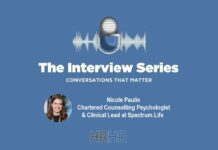By Nick Harrison
Smart phones. Self-driving cars. Genetic manipulation. Every week seems to bring a new discovery or insight. The possibilities seem more boundless than ever. Yet there are some who say that human achievement is slowing down; and indeed, that it must slow down.
The View from America in 2017
Technology is ascendant in America. On a popular news website, a biomedical company named Draper describes their plan to turn a dragonfly into a living drone. Draper’s project aims at grafting a tiny solar-powered backpack onto a dragonfly and then wiring that backpack to the insect’s nerve cord. This allows an operator to steer the dragonfly. Draper foresees the ability to turn dragonflies into pollination machines for farmers and surveillance devices for intelligence agencies.
Elsewhere, in a lab several stories underground, researchers are fighting malaria through the use of genetic manipulation. Funded by the Gates Foundation, these researchers are experimenting with a species of mosquito most responsible for transmitting the disease. The researcher sits down at a microscope and hovers a needle over tiny mosquito embryos. The needle introduces DNA that will render the malaria-transmitting mosquitos infertile. If this particular mosquito population can be eliminated, the primary vehicle for malaria transmission is also eliminated.
Above the earth, scientists using the Hubble telescope have determined that the universe is expanding much faster than originally thought. Through the blinking of distant quasars, observations provide new information about our origins and hint at discoveries yet to come.
By Patent Applications: Is Innovation Really Slowing Down?
Despite these and countless other examples of discovery, some still say that innovation is slowing down. Many have decried these claims. Bill Gates himself has called such arguments “stupid”. And on the one hand, it is easy to see Gates’ rationale.
A popular argument that innovation is slowing down is based on the number of patent applications filed per year. Patents have surged in the years between 2011 and 2013; and while patentable inventions still appear in the millions each year, the rate of growth in 2014 was strikingly lower. The growth rate in 2015 rebounded somewhat but did not approach earlier years. From this perspective, innovation is not matching previous years.
However, patent applications are expensive, laborious and uncertain. Many reasons exist to forego them. In some cases patents are not even the appropriate protection mechanism for a discovery. As a result, counting only patent applications excludes certain areas of innovation. For example, following the legal case of Alice Corp. v. CLS Bank International, the commercial software development industry has relied on trademark more heavily than patents in recent years.
Patent approval can also be affected by bureaucratic moods. If a high percentage of patent approvals occur in one year, the US Patent and Trade Office may take a harder look at applications the next year to ensure a high quality of patents. As such, the percentage of approvals can vary widely from year to year. Anticipating a higher standard may result in fewer patents applications filed.
When one considers these external factors, the use of patent applications as a metric for innovation looks unreliable and potentially one-dimensional.
Tennis, Diminishing Returns, and Lotka Curves
The law of diminishing returns refers to the point at which the level of benefit gained is less than the amount of money or energy invested. This has broad implications, not only in the realm of economics but in other areas of human accomplishment. Professional tennis is an accessible example.
Roger Federer is a successful tennis player. Over a twenty year career, he has amassed over $101M in winnings. Meanwhile, according to Forbes writer Miguel Morales, the 92nd-ranked tennis player in 2013 (named Michael Russell) netted only about $75,000 after expenses. That remains decent money, and many would no doubt prefer a job as the 92nd-best tennis player in the world as opposed to a cubicle.
In other words, there is ample financial motivation to win tennis tournaments. And as such, many find it in themselves to do just that.
Both Federer and Russell have dedicated their lives to tennis. Both work at it year round. Both “try hard”. But at a certain point, trying harder and financial incentive showed less benefit for Federer than Russell. Something else made Federer a better player and helped him avoid the law of diminishing returns.
In his book “Human Accomplishment”, Charles Murray coined the phrase Lokta curve to visualize this phenomenon. The better tennis player you are, the fewer peers you have. While many players rotate in and out of the top twenty rankings, the top two or three rankings are usually held by the same people.
Over time, within this “elite of the elite” sampling, you can see the unparalleled separate from the merely excellent. Scores of players over the years have held the No. 1 rank for at least one week. Far fewer have held it over 100 weeks. Only one – Roger Federer – has held the rank for over 300 weeks.
If you were to map this distribution as a line across a coordinate plane, a Lokta curve would form: a high number for the total of players who held the No. 1 rank for one week, curving down to the fewer that held it over 100 weeks. On the far side of the plane is Federer alone with his 300 week reign.
The Finite Universe
Tennis can always accommodate more Roger Federers because the participants are mortal and inconstant. The laws of nature are not. Fields that rest on accumulated knowledge will eventually solve their questions, given enough time.
Looking back on his work in particle physics, Richard Feynman remarked how lucky he had been to live when he did. He compared it to the discovery of America – an event that can only happen once. It was an apt metaphor. The power of the atom had been intuited and sought after since the writings of Lucretius, nearly two thousand years prior. And in Feynman’s lifetime, he partook in the project that successfully split the atom at Los Alamos.
As great minds come to take their place on the Lotka curve, their efforts will answer many questions that touch on fundamental truths of nature. Some of those efforts will spawn new questions; others will settle the question. In the case of the latter, it can be argued that innovation’s work in that field is done. In this situation, one can see innovation as truly slowing down.
And yet.
The essence of innovation is new insight. As such, the matter is never entirely closed. Anatomy, a field long since thought to be explored, surprised everyone in early 2017. With new research and using new tools, the human body gained a new organ near the stomach: the mesentery. The symbolism is fitting. Discovered at the core of the human body, we can see uncharted territories remain within and without, and with it: opportunity for innovation.
About
Nick Harrison has 15 years of experience as a systems engineer. He is currently enrolled in the Western Carolina School of Business, pursuing a Master’s degree in Entrepreneurship.











































